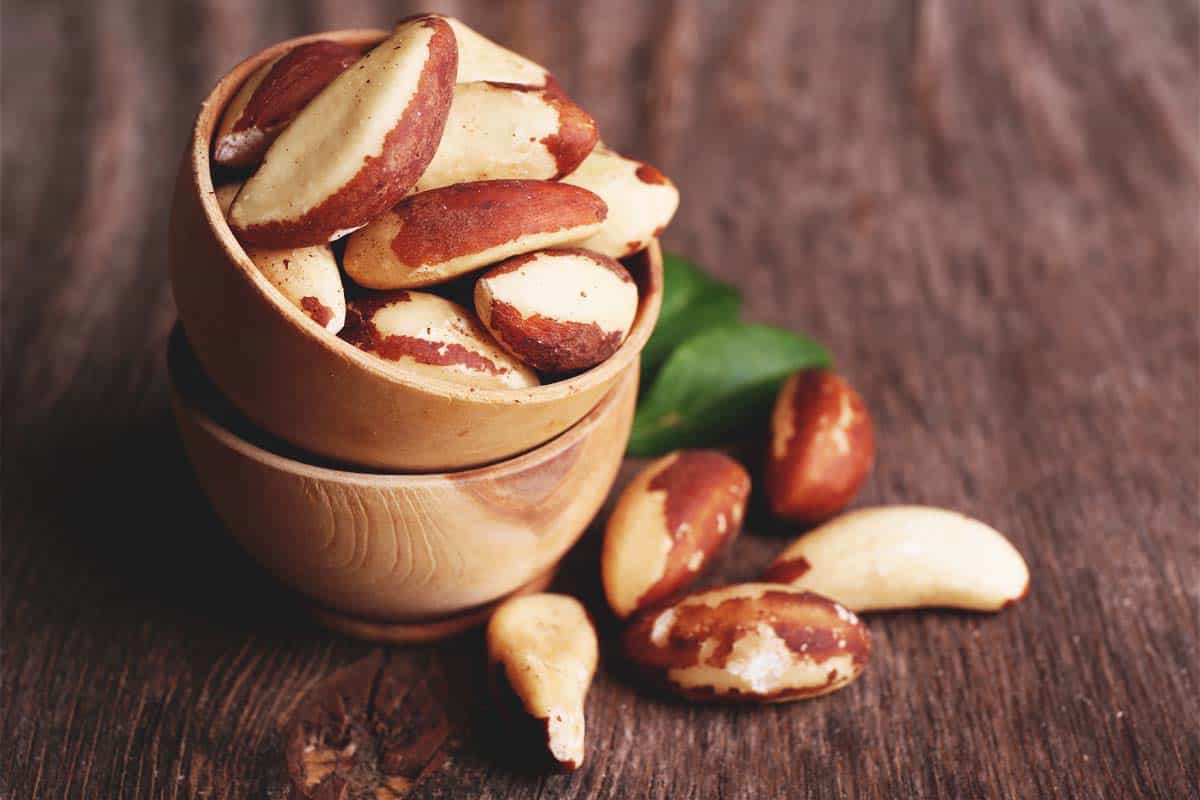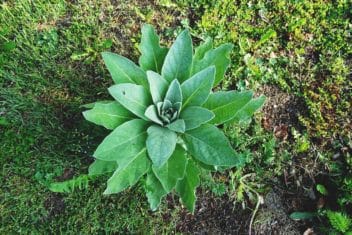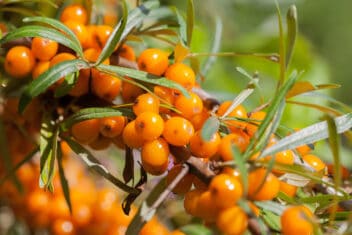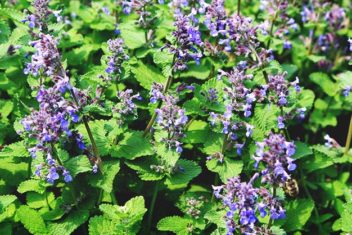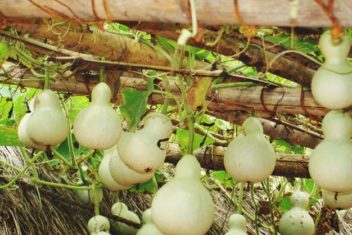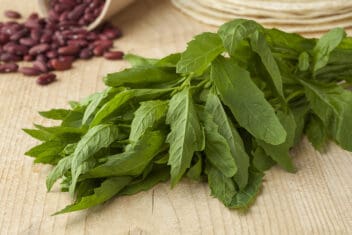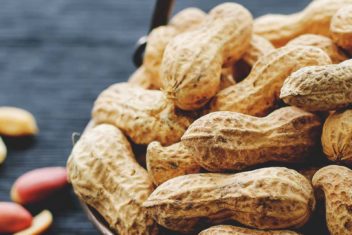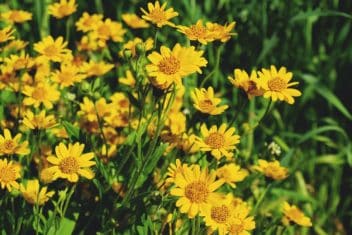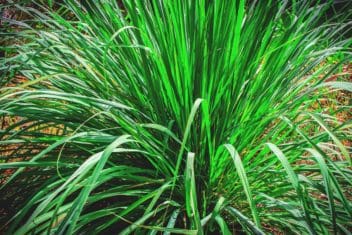Have you ever opened up a bag of delicious Brazil nuts and wondered if you could grow them at home? I did, and so I took a chance and planted my own tree.
Now, my beautiful Brazil nut trees tower over my garden, providing shade and hundreds of pounds of healthy nuts each year.
Brazil nut trees can take up to 20 years to produce nuts, so this is a project that takes a lot of patience. They’re not easy to grow, either. But trust me, the effort is worth it.
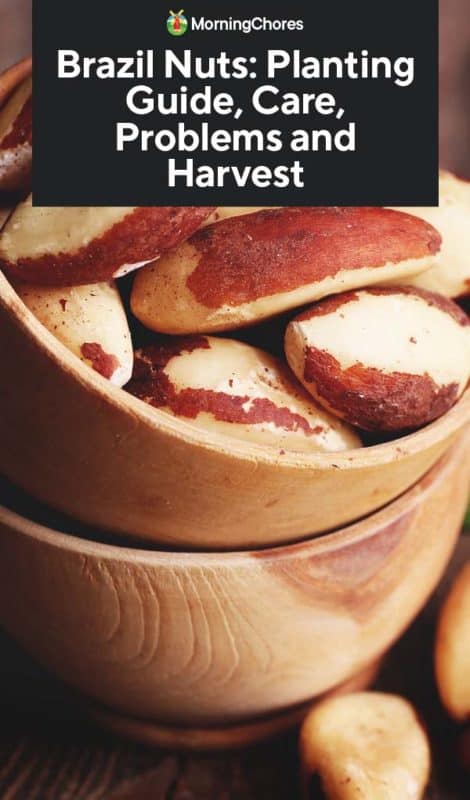
How to Plant Brazil Nuts
Brazil nut trees are tropical evergreens that grow naturally in countries like Brazil, Bolivia, Columbia, and Peru along the banks of rivers like the Rio Negro and Amazon. Natural trees produce better, but it’s possible to cultivate them.
Growing Zones
Brazil nuts require a tropical, humid environment and do best in zones 11, 12, and 13. Don’t let this put you off, though.
If you live in warm areas where the winters don’t get too cold, give growing Brazil nuts a chance. I live in an area that has sweltering hot summers and cold winters, and my Brazil nut trees are still growing strong.
Sun Requirements
Plant in full sun. The Brazil nut tree needs lots of sunshine and heat. It will turn its toes up in the deep shade, but a little cover in the heat of the day isn’t a problem.
Soil Requirements
Brazil nuts need well-draining soil, rich in well-rotted organic matter. Think about their natural environment where leaves, branches, and other matter fall to the forest floor and rot over time. Aim for a pH between 5.5 and 6.5.
When to Plant
Plant in late spring or early summer when temperatures are consistently warm – above 70°F.
Sprouting the Seed or Nut
The Brazil nuts you buy in the store have been processed, usually by boiling, so they won’t germinate.
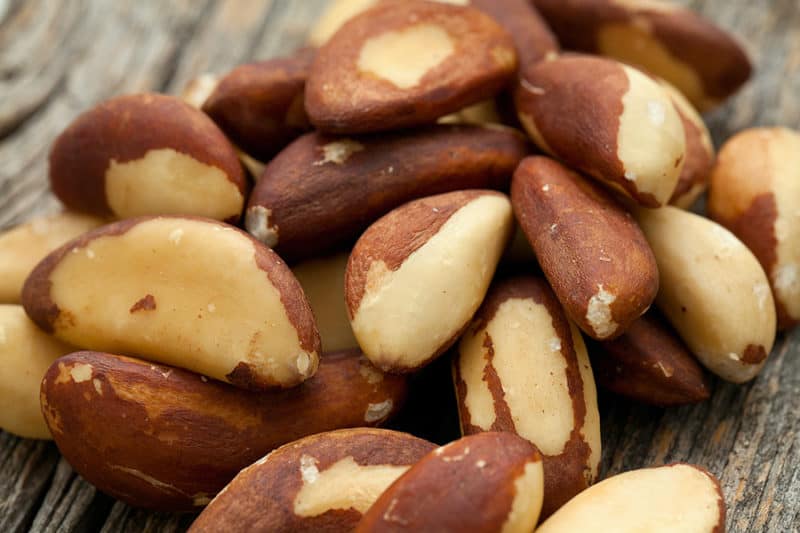
The Brazil “nut” is actually a seed. There are some specialty nurseries and markets that have raw seeds suitable for planting.
Steps:
- Place several Brazil nuts in a mason jar and cover with water for 24 hours.
- Tip the water out and refill every 8 hours. Repeat this step until you see the nuts sprouting.
- Gently remove the husk of the nut.
- Fill several mason jars with good quality seed raising mix and bury one sprouted seed in each. Water gently without soaking the nut and soil.
- Cover the top of the jar with cheesecloth and use a rubber band to hold it in place.
- Move the jar to a warm indoor location out of direct sunlight.
- Water as needed, remembering not to over water.
- When the sapling grows and develops its first set of leaves, remove from the jar and plant in its own pot.
- Keep the pot inside until the tree is about 3 feet tall and it’s strong enough to withstand wind.
- You’ll need to increase the size of the container incrementally as the tree grows. Brazil nut trees have long taproots and a container will become too small rapidly.
Planting the Tree
You need a garden where you’re able to grow extremely tall trees. Some Brazil nut trees grow to over 160 feet. I have a large property, and my Brazil nut trees stand head and shoulders over the rest.
Plant the tree once it’s about 3 feet tall. Give it ten days of transition to harden off before you plant.
Dig a hole twice the size of the root system and deep enough to accommodate the taproot.
Fill with well-rotted manure and compost and pack down. Ensure you stake the tree to hold it steady for the first year.
Water your new tree well when you first plant it, but don’t allow the ground to become too soaked.
Spacing
If you have the space for planting more than one Brazil nut tree, space them about 32 feet apart.
Caring for Brazil Nut Trees
Brazil nuts are a beautiful tree that can grow massive and produce nuts for hundreds of years if you give them the right conditions.
Fertilizer
Although Brazil nut trees need a balanced fertilizer, they require lots of nitrogen. Look for a granular fertilizer with a 20-10-10 mix.
Feed once in the early spring and once in late summer.
Water
Brazil nut trees love humidity and moisture, but they also like the water to drain away. If you get lots of rainfall, ensure the soil doesn’t get sodden by providing ways that move excess water away and make sure your soil is free-draining,
If you live in a dry area, water well a couple of times a week regularly. Don’t let the soil dry out completely.
Pruning
Prune for shape after two years, but the trees grow huge and will be impossible to prune after a few years.
Pollinating
Attracting pollinators is the single biggest challenge you’ll face when growing Brazil nuts. Plant plenty of bee-attracting plants to improve your chances of pollination.
Common Problems and Solutions for Growing Brazil Nuts
While they may be fussy to grow, the good news is Brazil nuts don’t have a ton of pests.
Brazil Nut Leaf Blight
This soil-borne fungal disease creates big spots on leaves, causing them to wither and die.
Use an organic fungicide to control.
Cocoa Weevil
These little mites tunnel into the nut and eat the inside, decimating your harvest. Target them post-harvest with a fumigant.
Companion Planting for Brazil Nuts
The Brazil nut trees in the Amazon have a balanced environment. At the base grows a particular type of orchid. This orchid attracts a specific type of bee that pollinates the flowers of the tree.
I live in an environment where the orchids won’t survive, so I plant as many flowers as possible to attract the type of bees we get here.
Don’t plant with avocado or mango because they share similar diseases.
Harvesting Brazil Nuts
These stately trees can provide up to 250 pounds of fruit every year.
The tree produces large coconut-like shells, and inside are lots of nuts, almost shaped like orange segments. There are about 15 to 20 Brazil nuts inside each large shell.

The nuts are incredibly nutritious. High in monounsaturated fats, they also contain ample amounts of B vitamins, zinc, vitamin E, and magnesium.
You won’t need to climb the tree to harvest the nut. The massive pods will fall on their own – and watch out when they do! The seed pod is the size of a small coconut, so keep people away during the season where they start to fall.
The pods need to be cracked open with a machete, saw, or large knife. Inside are the individual Brazil nuts, each in their own shell. I roast them for 15 minutes to make it easier to crack that shell open. Other methods are to freeze them for 6 hours or boil for two minutes.
I use a dehydrator to dry them off or roast with various dried herbs, spices, or salts.
Don’t Be Afraid to Try Growing Brazil Nuts
Brazil nut trees are big and take a long time to produce their fruit. They’re a fun growing challenge, and it’s so satisfying when you get it right.
Don’t let their uniqueness put you off. If you don’t end up with pounds of Brazil nuts, you’ll at least have a magnificent looking tower of a tree that will be around for hundreds of years.
